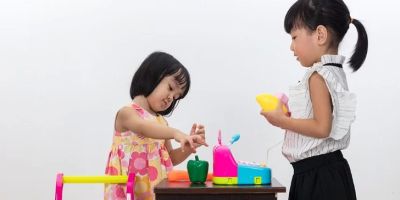Why Eco-Friendly Materials in Toy Manufacturing Are the Future
As a parent, I’ve always been careful about the products I bring into my home. When it comes to toys, I’ve found that the materials they’re made of can impact not only my children’s health but also the environment we all share. I vividly remember when my daughter, Emily, was younger and insisted on buying a plastic toy that seemed too shiny and new. I was excited by her joy, but once I looked closer, I realized it was made of low-quality plastic, which raised concerns about its durability, safety, and environmental impact. That moment sparked my interest in finding better alternatives. That's when I began to explore the world of eco-friendly materials in toy manufacturing. What I discovered has completely transformed how I view the toys I purchase for my family.
Choosing eco-friendly materials in toy manufacturing is more than just a trend—it’s a necessary shift in the way we think about sustainability, safety, and quality. The demand for environmentally conscious products has risen in recent years, and the toy industry is no exception. Parents like me are becoming increasingly aware of the impact that plastic toys can have on the environment and our children's health. From reducing waste to improving safety, eco-friendly materials in toy manufacturing offer a host of benefits for both consumers and manufacturers alike. In this article, I’ll share why eco-friendly materials are a game changer for the toy industry and how these materials benefit our children, the planet, and the future of toy manufacturing.
1. Reducing Environmental Impact with Sustainable Materials
One of the biggest reasons I’ve switched to eco-friendly toys is to reduce the environmental impact. Traditional plastic toys are made from materials that take hundreds of years to decompose. The idea of these toys lingering in landfills for centuries after they’ve outlived their usefulness is unsettling, especially when you consider that millions of plastic toys are produced and discarded each year. In fact, a recent study found that nearly 90% of the plastic waste in the ocean comes from products like plastic toys. These numbers are hard to ignore.
Eco-friendly materials, such as bamboo, recycled plastics, and organic cotton, are biodegradable or recyclable, making them far less harmful to the planet. For example, I found a great wooden toy set made from sustainably harvested wood and finished with natural dyes. Not only is the toy itself safer for my children, but the entire production process is also environmentally friendly. By supporting manufacturers who use sustainable materials, I feel like I am contributing to a reduction in the toy industry’s carbon footprint and helping to keep our planet cleaner for future generations.
2. Enhancing Safety and Health for Children
As a parent, I know that children often put toys in their mouths, especially when they’re younger. This behavior can pose serious health risks if the toys are made from materials that contain harmful chemicals. Many plastic toys are made with phthalates, BPA, and other toxic chemicals, which are known to be harmful to children’s health. I was especially concerned when I realized that many of the toys I had bought Emily in the past could have posed potential health risks due to these chemicals.
Switching to eco-friendly toys gave me peace of mind, knowing that the materials used are non-toxic and safe for my children. Organic cotton, natural rubber, and untreated wood are just a few examples of eco-friendly materials that are free from harmful chemicals. Not only do these materials ensure that the toys are safe for my children to play with, but they also contribute to a healthier home environment overall. I’ve found that many manufacturers of eco-friendly toys are incredibly transparent about the materials they use, which makes it easier to choose products I trust.
3. Improving Durability and Longevity of Toys
Another reason I’ve chosen eco-friendly toys is that they tend to be more durable and long-lasting compared to traditional plastic options. While plastic toys may seem inexpensive initially, they often break easily and end up in the trash sooner than expected. I’ve experienced this firsthand with some of the cheaper plastic toys I bought for my kids, which didn’t withstand the wear and tear of daily use. The materials used in eco-friendly toys, such as high-quality wood or metal, are built to last and stand up to rough handling.
Durable toys are not only more cost-effective in the long run, but they also reduce waste. Instead of constantly replacing broken toys, I’ve noticed that eco-friendly toys tend to last much longer, which ultimately helps reduce the overall environmental footprint. Moreover, these toys can often be passed down from one child to the next, making them even more sustainable. I’ve found that the investment in eco-friendly toys often pays off, both in terms of quality and longevity.
4. Promoting Conscious Consumerism and Supporting Ethical Practices
Choosing eco-friendly materials in toy manufacturing also supports a larger movement toward conscious consumerism and ethical business practices. Many manufacturers of eco-friendly toys prioritize fair labor practices and ethical sourcing of materials. By choosing eco-friendly toys, I know that I am supporting companies that are committed to making a positive impact on the world—not just in terms of the environment but also in how they treat their workers and source their raw materials.
It’s easy to feel disconnected from the global impact of our purchases, but supporting ethical manufacturers gives me a sense of empowerment as a consumer. The more parents who choose eco-friendly toys, the more pressure there is on toy companies to adopt sustainable and ethical practices. By purchasing eco-friendly toys, I feel like I’m voting with my dollars for a better future—not just for my children but for the world as a whole.
5. Encouraging Education About Sustainability and Environmental Awareness
As I began to explore eco-friendly toys more deeply, I realized that these toys often offer an opportunity to teach my children about sustainability and the environment. Many eco-friendly toy brands incorporate educational elements into their designs, such as toys made from recycled materials or kits that teach kids about environmental conservation. For example, we recently purchased a set of eco-friendly blocks made from bamboo, and the packaging included educational materials about sustainable forestry and the importance of replanting trees. This made for a great learning opportunity for Emily and me, and it sparked meaningful conversations about how we can take care of our planet.
By introducing my children to eco-friendly toys, I’m helping them understand the importance of sustainability from a young age. They’re learning that the choices we make can have a lasting impact on the environment, and I’m hopeful that this will inspire them to make more mindful decisions as they grow older.
6. The Future of Toy Manufacturing: A Sustainable Shift
Looking to the future, I am excited to see the direction that toy manufacturing is headed. As demand for eco-friendly products continues to rise, I believe we’ll see even more innovation in the industry. Companies are increasingly exploring new, sustainable materials, such as plant-based plastics and biodegradable substances, to create toys that are both fun and environmentally responsible. This shift toward sustainability not only benefits the environment but also provides a model for future generations about how to create a greener, more responsible world.
I’m optimistic that the toy industry’s move toward eco-friendly materials will lead to a cleaner, safer, and more sustainable future for our children. With each eco-friendly toy purchased, we’re sending a message that sustainability matters and that we care about the world our children will inherit. If you’re looking for high-quality, eco-friendly toys, I recommend checking out Knight Toys, which offers a wide range of environmentally conscious products for children. By supporting these brands, we can help make a difference.





